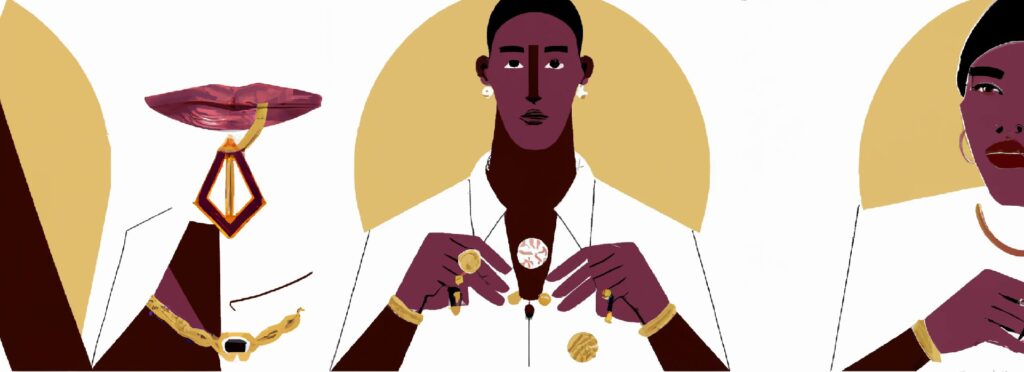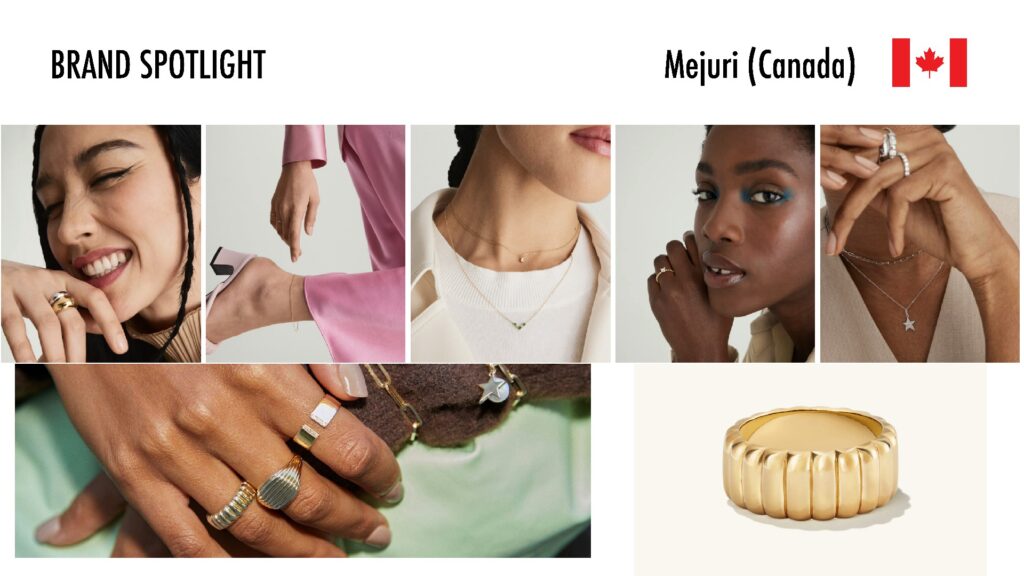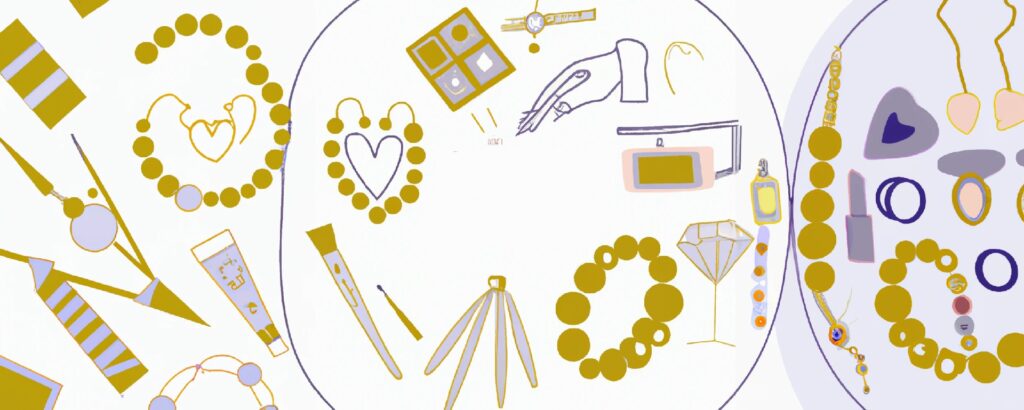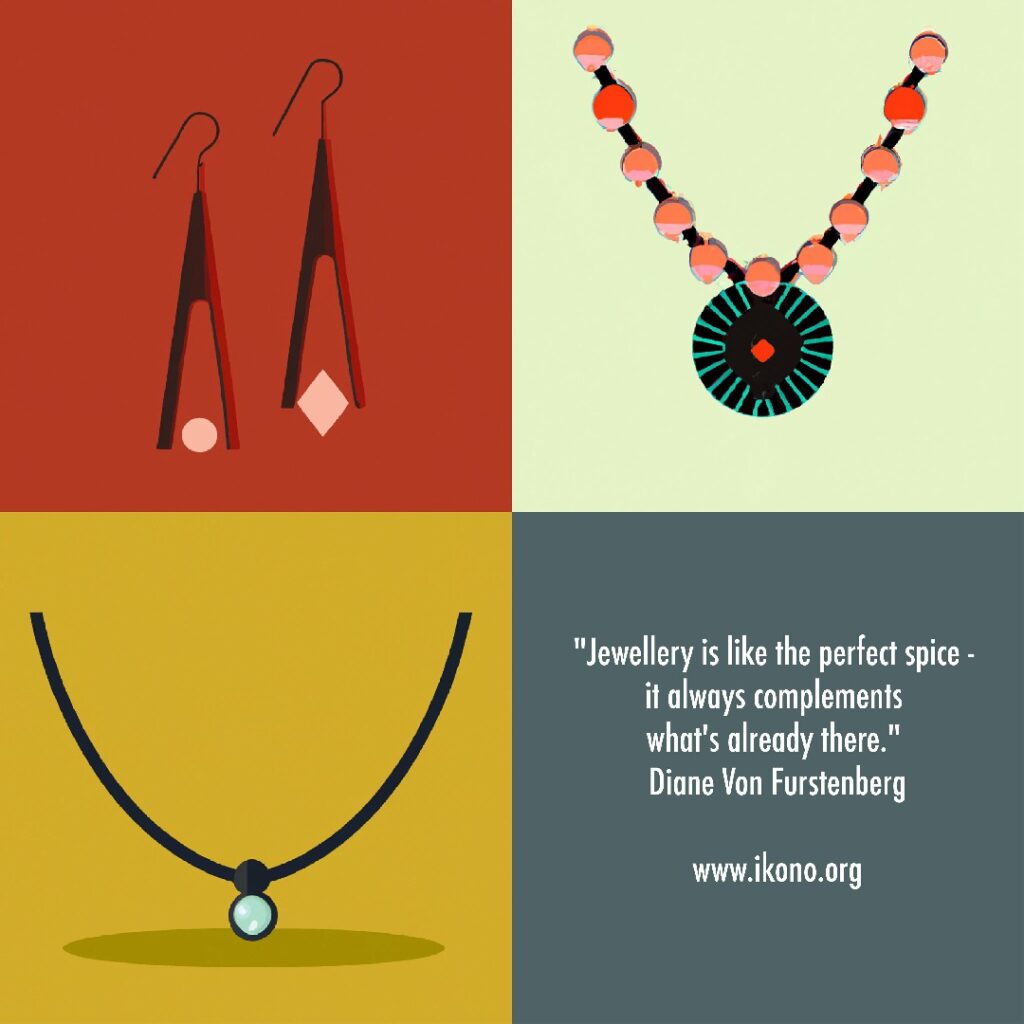
The Art of Sparkle: Marketing of Jewellery Brands
From ancient civilizations to modern-day fashion statements, jewellery has long held a place of significance in human culture. As an expression of identity, status, and sentiment, the allure of these precious adornments transcends time and geography. In this article, we explore the diverse categories of jewellery and the marketing of jewellery brands, delving into the various facets that give this industry its unique sparkle.

A snapshot of the Jewellery Category
The world of jewellery is vast and varied, encompassing a wide range of materials, styles, and price points. To understand the marketing of jewellery brands, one must first grasp the different categories that make up this intricate industry:
Fine Jewellery:
Crafted from precious metals such as gold, platinum, and silver, and adorned with gemstones like diamonds, rubies, sapphires, and emeralds, fine jewellery represents the pinnacle of luxury and craftsmanship. The marketing of fine jewellery brands often focuses on exclusivity, heritage, and the intrinsic value of the materials used.
Fashion Jewellery:
Accessible and trend-driven, fashion jewellery incorporates a diverse array of materials, including gold-plated metals, semi-precious stones, and even unconventional materials like wood, glass, or fabric. It is composed of fashion jewellery brands emphasizes style, affordability, and the ability to adapt to ever-changing trends.
Demi-Fine Jewellery:
Bridging the gap between fine and fashion jewellery, demi-fine jewellery features precious metals like gold and silver but often utilizes more affordable gemstones such as lab-grown diamonds or crystals. In branding demi-fine jewellery brands, the focus lies on striking a balance between quality, value, and accessibility.
Designer or Luxury Jewellery:
Renowned for their exquisite craftsmanship, high-quality materials, and iconic branding, designer or luxury jewellery brands create pieces that are synonymous with a particular fashion house or designer name. here communications highlights the brand’s heritage, exclusivity, and the prestige associated with owning a piece from a coveted label.

The jewellery market is a glittering tapestry of design, luxury, and emotion, where artisanal craftsmanship meets cutting-edge innovation. From the opulence of high-end brands to the accessibility of fashion-forward pieces, the industry offers a dazzling array of choices for consumers. As we explore the complexities of the jewellery market, we pinpoint the crucial role that the marketing of jewellery brands plays in the dance between artistry and commerce that this category represents.
The Global Jewellery Market
The global jewellery market is a dynamic and ever-evolving landscape, influenced by economic factors, cultural shifts, and consumer preferences. In recent years, the market has experienced significant growth
The jewellery market is characterized by a diverse mix of players, ranging from iconic luxury brands to innovative startups. Succesfull marketing of jewellery brands must be tailored to each brand’s unique value proposition and target audience. Key players in the market include:
Luxury Brands:
Renowned for their exquisite craftsmanship, high-quality materials, and iconic branding, luxury jewellery brands such as Cartier, Bvlgari, and Tiffany & Co. cater to consumers seeking the ultimate in prestige and exclusivity. This players often emphasizes heritage, artistry, and the allure of owning a piece from a coveted label.
Fine Jewellery Brands:
Fine jewellery brands such as Buccellati, Boucheron, and Chopard focus on creating timeless, elegant pieces crafted from precious metals and adorned with gemstones like diamonds, rubies, and sapphires. The marketing of this fine trademarks highlights the intrinsic value of the materials used, as well as the artistry and attention to detail that goes into each piece.
Fashion Jewellery Brands:
Fashion jewellery brands like Swarovski, Kendra Scott, and BaubleBar offer accessible, trend-driven pieces that incorporate a variety of materials and designs. The marketing of fashion jewellery brands emphasizes style, affordability, and the ability to adapt to ever-changing trends.
Innovative Brands:
Innovative jewellery brands such as Pandora, Mejuri, and AUrate New York have carved a niche for themselves by offering unique products, sustainable practices, or accessible pricing. This players showcase their distinctive offerings and resonating with a specific target audience.

Ahead of the Curve: Jewellery Trends
Understanding the prevailing trends is paramount for the marketing of jewellery brands. From bold statement pieces to minimalist designs, jewellery trends reflect the ever-evolving tastes and preferences of consumers. Some current trends include:
Sustainable and Ethical Practices:
Consumers increasingly prioritize ethical sourcing and sustainable production. Brands must demonstrate transparency in their supply chains and actively promote eco-friendly practices.
Personalization and Customization:
As in many other categories, personalized and bespoke jewellery continues to gain popularity. Offering customization options and individualized designs can elevate a brand’s appeal and create a deeper connection with its customers.
Digital Presence:
With the rapid growth of e-commerce and social media, maintaining a strong online presence is essential. Utilizing digital platforms for marketing, sales, and customer engagement has become a critical aspect of the jewellery industry.
Gender-fluid and Inclusive Designs:
Modern consumers seek inclusivity and gender-neutral options. Brands that embrace diversity and create versatile designs are well-positioned to capture the attention of a broader audience.
Technological Advancements:
The integration of technology into the design and production processes has paved the way for new possibilities in jewellery creation, such as 3D printing and computer-aided design.

Consumer Behaviour in Buying Jewellery
Jewellery, as an emblem of luxury, self-expression, and sentimentality, has always held a unique place in the consumer landscape. The decision to purchase a piece of jewellery often involves complex emotions and motivations, making the understanding of consumer behaviour a crucial aspect of the marketing of jewellery brands.
When it comes to buying jewellery, consumers are influenced by a delicate interplay of emotional and rational factors. Branding this kind of products must carefully balance these factors to resonate with their target audience:
Emotional Motivations:
Jewellery often holds deep sentimental value, serving as a symbol of love, commitment, or personal achievement. The emotional motivations behind jewellery purchases include the desire for self-expression, the celebration of milestones, and the act of gift-giving.
Rational Considerations:
Alongside the emotional aspect, rational factors such as price, quality, and the reputation of the brand also play a significant role in the purchasing decision. Consumers may be concerned with the durability and craftsmanship of a piece or the ethical and sustainable practices of the brand.
The marketing of jewellery brands plays a critical role in shaping consumer behaviour, influencing perceptions and creating an emotional connection with potential buyers. Successful marketing strategies for jewellery brands take into account the following considerations:
Understanding the diverse needs and preferences of different consumer segments is essential for the marketing of jewellery brands. Some key segments to consider include:
Luxury Buyers:
Consumers who seek the highest levels of quality, prestige, and craftsmanship are drawn to luxury jewellery brands. These buyers are often motivated by the desire to own a piece from a renowned label or to make a statement about their social status. To resonate with them, brands should emphasize heritage, artistry, and exclusivity.
Value-Seeking Buyers:
For many consumers, affordability and value for money are critical factors in their purchasing decisions. These buyers may be drawn to fashion or demi-fine jewellery brands that offer high-quality, stylish pieces at accessible price points. The marketing of these brands should focus on striking a balance between quality, style, and affordability.
Ethically-Minded Buyers:
Increasingly, consumers are prioritizing ethical and sustainable practices in their purchasing decisions. Brands that demonstrate transparency in their supply chains and actively promote social and environmental sustainability.

Innovative Jewellery Brands Examples
In an industry steeped in tradition, innovation can be a breath of fresh air that captures the attention of consumers and redefines the boundaries of what is possible. As the jewellery market continues to evolve, a new generation of brands is emerging, challenging conventions and offering unique, forward-thinking products. In this article, we showcase some of the most innovative jewellery brands and explore how the marketing of jewellery brands is integral to their success.
The following brands have carved a niche for themselves in the jewellery market, offering unique products and experiences that set them apart from the competition:
Vrai: As a pioneer in lab-grown diamonds, Vrai has transformed the diamond industry with its commitment to sustainability, transparency, and innovation. By harnessing the power of technology to create diamonds that are identical to their mined counterparts but with a significantly smaller environmental footprint, Vrai has positioned itself as a leader in ethical and sustainable jewellery. The marketing of this jewellery brand focuses on educating consumers about the benefits of lab-grown diamonds and emphasizing the brand’s dedication to responsible practices.
Catbird: Brooklyn-based Catbird has made a name for itself with its delicate, whimsical designs that are handcrafted by a team of artisans in its local studio. With a focus on ethically sourced materials and an emphasis on craftsmanship, Catbird has garnered a loyal following among those seeking unique, understated pieces. Communications center around its commitment to sustainability, artisanal quality, and its strong connection to the local community.
AUrate New York: AUrate New York offers high-quality, contemporary jewellery at accessible prices by cutting out the middleman and selling directly to consumers. Founded by two women on a mission to democratize the world of fine jewellery, the brand combines timeless design with ethically sourced materials, creating versatile pieces that can be worn every day. Keywords are the combination of luxury and affordability, as well as the brand’s commitment to social impact through its support of educational initiatives.
Mejuri: Mejuri has disrupted the fine jewellery market with its direct-to-consumer model, offering luxury pieces at a fraction of traditional retail prices. By working with expert craftsmen and using ethically sourced materials, Mejuri has cultivated a devoted following of consumers seeking high-quality, affordable jewellery. Accessible luxury, transparency, and the ability to empower consumers to treat themselves to fine jewellery without relying on special occasions or gift-giving.

Embracing Technology and Sustainability
One of the key drivers of innovation in the jewellery industry is the adoption of technology and the pursuit of sustainability. The following brands have made significant strides in these areas, earning them a place among the most innovative jewellery brands:
Bario Neal: With a focus on ethical sourcing and sustainability, Bario Neal has gained a reputation for creating environmentally friendly, socially responsible jewellery. The brand works closely with local communities and artisanal miners to source materials and prioritizes the use of recycled metals in its production process.
Otiumberg: Otiumberg combines technology and craftsmanship to create customizable, demi-fine jewellery at accessible prices. By leveraging 3D printing technology, the brand can offer a wide range of customization options, allowing consumers to create truly unique pieces.

Crafting Success: Marketing Strategies for Emerging Jewellery Brands
The jewellery industry is a multifaceted landscape, where traditional artisans coexist with cutting-edge innovators, and luxury brands rub shoulders with affordable fashion labels. In this competitive market, emerging jewellery brands must adopt creative, targeted marketing strategies to stand out and connect with their audience. In this article, we explore the best practices in the marketing of jewellery brands, focusing on the tactics and strategies that can help emerging brands carve a niche for themselves in this glittering world.
Building a Strong Brand Identity
Establishing a strong brand identity is crucial for emerging jewellery brands, as it helps to differentiate them from their competitors and create an emotional connection with consumers. Some key elements to consider when building a brand identity include:
Defining Your Brand’s Core Values:
The foundation of a strong brand identity lies in defining the core values that underpin your brand. These values will inform everything from your designs to your messaging and should be clearly communicated through all aspects of your marketing.
Crafting a Compelling Brand Story:
A compelling brand story can help to create an emotional bond with customers and build loyalty. This story should be woven through all aspects of the marketing of jewellery brands, from website content and social media to packaging and in-store displays.
Developing a Unique Visual Identity:
A distinctive visual identity is essential in the marketing of jewellery brands, as it helps to create instant recognition and set your brand apart from competitors. This includes aspects such as your logo, colour palette, typography, and photography style.
Targeting the Right Audience
Understanding your target audience and tailoring your marketing efforts to resonate with their needs, preferences, and desires is essential for success. Some key steps to consider when targeting the right audience include:
Conducting Market Research: In-depth market research can help you gain valuable insights into your target audience’s demographics, interests, and behaviours. This information can be used to inform the development of your marketing strategy, ensuring that your messaging and tactics are aligned with your audience’s preferences.
Creating Buyer Personas: Developing detailed buyer personas can help you to better understand your target audience and create marketing campaigns that speak directly to their needs, desires, and pain points. These personas should be based on real data and insights gleaned from your market research.
Segmenting Your Audience: Dividing your target audience into smaller, more specific segments can help you to tailor your marketing efforts and create more targeted, personalized campaigns. This can lead to increased engagement and a higher return on investment in the marketing of jewellery brands.

Leveraging Digital Marketing Channels
In today’s digital-first world, emerging jewellery brands must harness the power of digital marketing channels to reach and engage with their target audience. Some key digital marketing tactics to consider include:
Building an Engaging Website: Your website is the digital face of your brand and should be designed to showcase your products, tell your brand story, and provide a seamless shopping experience for customers. Invest in high-quality product photography, compelling copywriting, and intuitive navigation to create an engaging online presence.
Implementing Search Engine Optimization (SEO): SEO is essential for driving organic traffic to your website and ensuring that your brand is visible to potential customers who are searching for products like yours. Optimize your website content and metadata with relevant keywords, and create high-quality, shareable content to build your domain authority and improve your search engine rankings.
Harnessing the Power of Social Media: Social media platforms such as Instagram, Pinterest, and Facebook are powerful tools in the marketing of jewellery brands, allowing you to showcase your products, engage with your audience, and generate buzz around your brand.
At Ikono we are enthusiastic about collaborating with established jewellery brands to help them carry into the future, or support emerging innovoative brands in cutting trough the clutter, get in contact now to find out how we can make your brand stand out!


